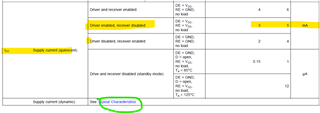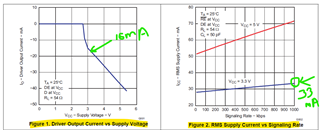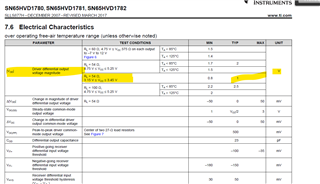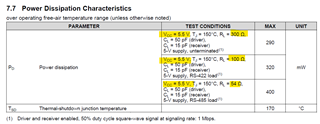Other Parts Discussed in Thread: THVD2450
Dear Team,
I am using SN65HVD1781DR chip for my RS485 interface.
I have queries wrt supply current values of different values provided at different places.
1) From electrical characteristics table 7.6, Icc is 5mA as highlighted below.

In the same table, there is dynamic characteristics is taking me to different place having higher supply currents of 16mA or 33mA as shown in two different characteristics diagram provided in below snip,

So, what is the significant difference between 5mA provided in the first table, and the 16 or 33mA provided in the dynamic characteristics graphs.?
As per my design, I am using Vcc 3.3V & 120 ohm termination. So, for 1V differential output voltage, the current required into the 120-ohm resistor should be 1V/120 = 8.3mA
So, the calculation tells that it should take minimum of 8.3mA. but how it is mentioned as 5mA in the datasheet.?? I am confused. Please help me to understand.
Regards,
Pradeep. S



